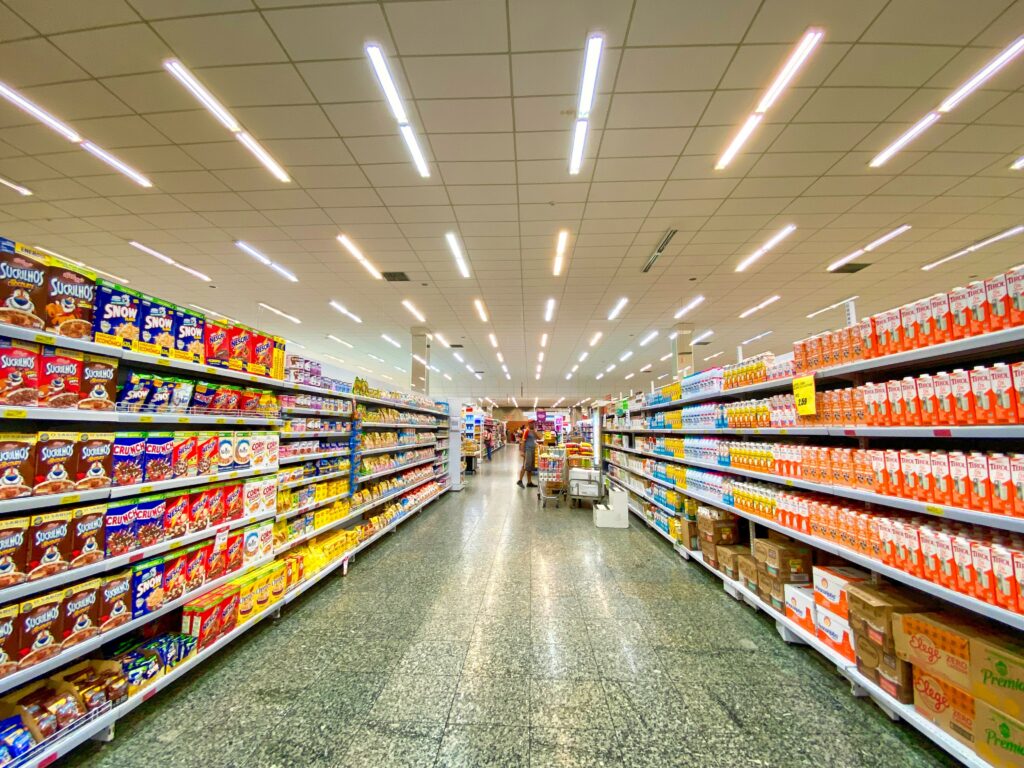On shelf availability (OSA) estimates the time and percentage a product is available for sale to customers on a store shelf. It is one of the key performance indicators for fast moving consumer goods analytics. The metric has direct correlation with out of stock rate and its impact can be measured by sales volume lost compared to actual sales.
Causes affecting on shelf availability rate
Key in understanding on shelf availability lies in its definition. On shelf availability describes product availability on store shelf in the place customer expects to find it and at the time he wants to buy it. Big picture aspects, such as problems in the supply chain, can affect OSA rate.
However, huge value of sales is often lost due to inefficient shelf restocking. Such daily essentials as dairy products or milk just fly off the shelves. Sales promotions can require faster than usual shelf restocking. There is little use of goods sitting in the store stockroom when shelves are running empty. Actually slow shelf restocking is the leading value lost cause in day-to-day grocery retail operations.
On shelf availability tracking
Retail managers have well defined processes and analytics to ensure the item is in stock. However, stock tracking is done on the store – not on the shelf – level. Items can be ordered well in advance and supply chain issues can be mitigated by advanced planning. Regarding on the shelf availability we are addressing the ‘last mile’ issue. An item can be trucked in from a hundreds miles away. It is the ‘last mile’ from the stockroom on to the shelf which poses the most challenges.
Shelve availability tracking is mostly a human-factor issue. Most often it depends on the store manager who has well defined processes in-place for workers to do rounds in the store and check the stock on the shelves. Yet still all the best ‘on-paper’ processes go to bust when the store is down an employee or is crowded and extra workers have to man the checkout counters.
In addition, the retail chain managers have limited tools to monitor OSA performance. They can arrange secret shopper visits to the store, merchandisers also provide valuable feedback. Yet it can only identify the problem at a particular time, not addressing the underlying issues or establishing systematic best practices to improve the OSA rate.
On shelf availability tracking solutions
While cutting edge retail planning software helps to manage store stock, retail managers are turning to technology for better inventory management. RFID tags are a solution of choice for big box or fashion retailers. The tags themselves can cost from $0.05 to $1. The cost alone limits their use in fast moving consumer good retail. In addition, the installation of tags to many FMCG items is problematic. Therefore their use is limited to supply chain management or in-store tracking of expensive items.
Grocery retailers have also experimented with smart on-shelf scales to measure shelf stock levels. Smart scales are a solution of choice for futuristic cashier-less stores, where scale information is employed to proof check what item the shopper has taken. Nonetheless, installation of smart scales would require a huge investment, as all shelving inventory would have to be converted.


Next generation on shelf availability tracking solutions
Computer vision presents the most practical and efficient shelf level monitoring solution. Computer vision uses video camera feed and with the help of AI algorithms converts the real world visual information into quantifiable analytics.
Computer vision solutions can easily identify the stock level of items on the shelf and provide automatic notifications (such as SMS to employees) when a particular shelf is running low and requires restocking. In addition, retail chain managers can also monitor the feed and have a real-time oversight of OSA rate in every store.
Most often Computer vision can utilize the security cameras already installed in the store. It may require installation of additional cameras where field of view is limited. Yet still it is many times more cost-effective than any other technology for OSA tracking.
Here are some additional benefits for Computer vision powered on shelf availability analytics:
- Multi-purpose. In addition to on shelf availability tracking, the software and camera infrastructure can be utilized to provide analytics on queue management (average wait time, queue trends, sales lost to long queues), track visitor flow throughout the store and layout optimization, monitor if item prices on the shelf match the ones in the retail management software.
- Multiple integrations. The software can be integrated with retail management solutions, as well as provide actionable alerts (such as email or SMS) to trigger pre-defined employee actions.
- Pay-as-you-go. The software requires little to none hardware investment. It is available via Software-as-a-Service model via a monthly fee, which depends on the number of monitoring points, as well as monitoring complexity.
To learn more about next generation on shelf availability monitoring solutions, get in touch!
Curious About The Above Solution?
Chat with Vejūnė and explore your possibilities without any commitment.


Vėjūnė Krašinskienė
Chief Operating Officer
Book a no-obligation free consultation with our expert.



